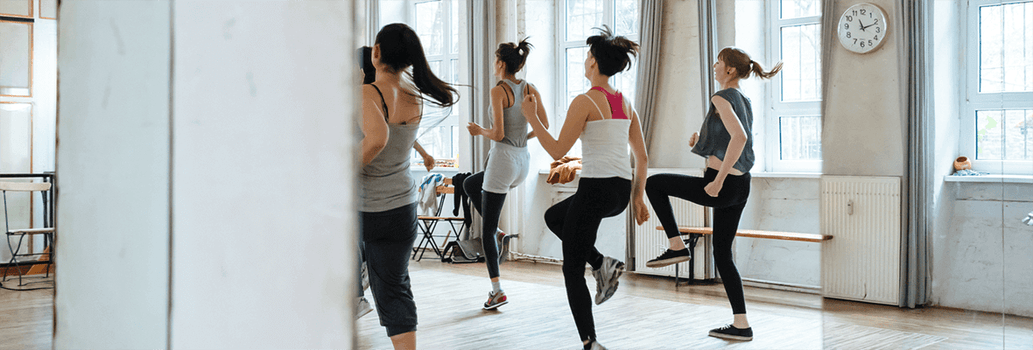Not only do bones support our body to help us move and protect our organs, they store vital minerals like calcium, and bone marrow is where our bodies produce red blood cells.
What can I do to protect my bone health?
There are three key steps you can take to build your bone mass, slow down your bone loss and reduce your chance of developing osteoperosis include boosting your calcium intake, regular exercise and sunshine.
Boost your calcium
Calcium’s major role is to strengthen your bones and teeth. Calcium also helps blood clotting, muscle function, nerve impulses, fluid balance and the release of hormones.
How much calcium?
The daily recommended calicum requirement for adults is 1000mg a day. This increases to 1300mg for adolescents, post-menopausal women and all people over 70 years of age. Aim for two to three serves of dairy or calcium-fortified dairy alternatives each day as well as trying to include as many other sources of calcium as possible.
Calcium rich foods
Many people believe that calcium foods are limited to dairy products such as milk, cheese and yoghurt and some fish such as sardines. While these foods can be good sources of calcium, they aren’t the only sources. Valuable plant sources of calcium include nuts, tofu, green leafy vegetables and fortified soy or nut-based milks.
| Food | Quantity | Calcium (mg) |
| Almonds, raw | ¼ cup (30g) | 90 |
| Almond milk, calcium fortified | 1 cup | 300 |
| Amaranth grain, cooked | 1 cup | 116 |
| Asian greens, like bok choy, raw | 1 cup | 65 |
| Brazil nuts, raw | ¼ cup (30g) | 53 |
| Calcium fortified breakfast cereal | ¾ cup | 200 |
| Cheese, cheddar | 2 slices (40g) | 320 |
| Dried figs | 6 figs (80g) | 160 |
| Milk, low fat | 1 cup | 367 |
| Soy beans, cooked | 1 cup | 106 |
| Soymilk, regular, calcium fortified | 1 cup | 400 |
| Soymilk, low fat, calcium fortified | 1 cup | 300 |
| Tofu, firm, set in calcium salts | ½ cup (130g) | 416 |
| Unhulled tahini (sesame paste) | 1 Tbsp (20g) | 66 |
| Yoghurt, regular | 200g | 386 |
Source: NUTTAB 2010 (5) and Sanitarium.
Eat more soy
Isoflavones (natural plant chemicals) found in soy may also help to increase bone formation, which will help to strengthen bones. Soy foods are also a source of calcium.
Limit salt
Salt and foods high in salt can increase calcium loss from the body.
Limit caffeine
Caffeine found in tea, coffee, cola and energy drinks can reduce calcium absorption in the body.
Stop smoking and reduce alcohol intake
These can both increase bone loss, and cause a raft of other health issues.
Move more
Exercise will help you to build bone, keeping your bones denser and stronger. The best bone building exercise is weight-bearing, including walking, hiking, climbing stairs, tennis, field sports, resistance training which is either machine based or using free weights, high impact exercises such as skipping or jogging and balance training like pilates. Varying the type of exercise and increasing its intensity will help further stimulate bone growth.
Sunshine
Vitamin D is known as the sunshine vitamin. It's essential for bone health as it helps to increase calcium absorption in the body, so try to increase your Vitamin D levels by exposing your skin to sunlight in the early mornings or late afternoons to prevent sunburn.
Food sources of vitamin D include vitamin D mushrooms (irradiated by the sun), eggs (a small amount) and fortified foods (margarines, some milks and soy beverages).
What functions do bones serve?
Bones serve some vital functions:
as a structural framework for tendons to attach to and provide support for soft tissue
to protect internal organs from injury e.g. the ribs protect the heart and lungs
to assist in movement. The tendons from muscles are attached to the skeleton so movement of the muscle results in movement of the bone and hence movement of the body
as a storage depot for many vital minerals the body needs in everyday activities eg calcium
to produce blood cells. The red bone marrow found in the connective tissue of certain bones is the site of blood cell production
as an energy storage site in children. Triglycerides which are a source of energy are stored in the yellow bone marrow.
When bones need some extra care
Bones play an important role in our wellbeing and we need to ensure we build strong healthy bones early on in life in order to avoid developing certain disorders, including osteoporosis.
During childhood and adolescence is when your body makes bone faster so it’s important to build as much bone mass as possible during these growing years.
From 30 years old you start to lose slightly more bone mass than you gain, so your bones naturally become less dense as you age. So it’s a good idea to take steps to strengthen your bones as much as possible to slow this process and reduce your risk of developing osteoporosis.
Did you know?
30 years old is when most people reach ‘peak bone mass’ - when bone density reaches its maximum and bones are at their strongest.
Osteoporosis
Osteoporosis is a chronic disease where a loss of calcium thins and weakens the bones. This causes the bones to become more fragile and likely to break and fracture from a fall or an injury. The most common fractures are the spine, hip and wrist.
There are two major factors that influence the development of osteoporosis:
Did you know?
Women are at a greater risk of osteoporosis because they have lighter bones and also experience drops in oestrogen levels after menopause, which speeds up the loss of bone.

